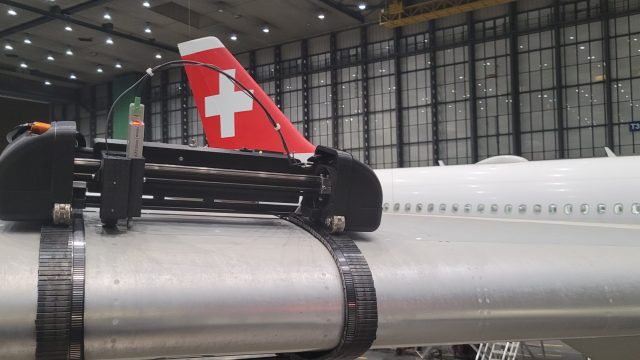Remote NDT Inspection
Remote NDT Service:

Our company is not only known for its innovations in the field of NDT and remote inspection – we have also been a reliable partner in the field of NDT with our own EASA Part-145 approval for years. Thanks to our highly experienced NDT team and with the help of our remote NDT robot, we can offer our NDT capabilities in the field of EASA Part-145 to our customers worldwide.
Our service ranges from AOG (Aircraft on Ground) operations on call, to full support of your aircraft fleet with a 24/7 service. To sum it up in a nutshell – we take care of the NDT inspection of your aircraft in case of damage – regardless of where your aircraft is currently on the ground. We as IMITec team live our motivation “We keep your Aircrafts flying”
Remote Inspection Robot:

Every person responsible for airline operations knows the problem – A dent in the aircraft structure caused by a bird strike or the inattention of the driver of a ground vehicle. In order to maintain flight operations, the involved areas such as mechanics, sheet metal workers and NDT must now work together quickly and efficiently, as a chain. But what happens if one link in this chain is missing? In many cases, the NDT division is not available or is difficult to reach. This circumstance is due to the small number of available NDT personnel.
For this reason, our company offers the possibility of a complete remote NDT inspection based on our patented NDT Inspection robot. Our NDT inspection robot can be installed in most parts of the aircraft, with a few simple steps, allowing the area to be inspected using standard NDT methods such as eddy current and/or ultrasound. Monitoring of the entire inspection is done via a remote connection, allowing the NDT inspection to be controlled and monitored from anywhere in the world. After a successful NDT inspection, a report with the results is generated by the remote NDT inspector and sent to the maintenance manager. This allows the aircraft to resume operations and avoids delays and costs caused by the failure of this flight.
